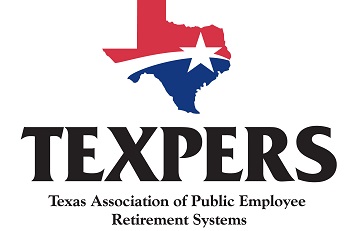Benchmarking your retirement plan
 |
| Photo: istock.com/WDnet |
By Marianne Marvez, Guest Columnist
Benchmarking
the fees and services provided to retirement plans by their recordkeepers is
not only a prudent practice, it is a fiduciary obligation.
Why should you benchmark your plan?
- Fulfill your fiduciary obligation to monitor your current service providers by gathering information required to review the quality of the services and assess the cost of those services to determine if they are reasonable.
- Compare your current service provider against the competition to determine if the current provider is still a good fit for your plan.
- Potential cost savings for both the plan sponsor and participants in the form of lower recordkeeping and investment costs.
- Refresh your plan design. It is prudent to review your objectives for offering a retirement plan. Have those goals changed, and if they have, what service enhancements might you consider adding to facilitate participant engagement, add value to the company and improve your ability to attract and retain talent?
There are no
set industry standards that mandate how often a plan sponsor should benchmark
their plan. Many industry experts suggest benchmarking recordkeeping fees every
three to five years. Some plans may have pre-determined benchmarking frequency
requirements written in their plan document or policy statement.
There are
several different ways to benchmark a retirement plan. One method specifically
designed to gather data on recordkeeping fees and services is a Request for
Information “RFI”. The RFI is customized
with your plan’s information including demographic and cash flow data, and
specific plan design and service requirements you wish to review. The documentation is prepared and the RFI is
sent to several recordkeeping firms which have experience with your size and
type of plan. Each firm is asked to prepare a pricing proposal using only the
specific customized plan data provided, to ensure an apples-to-apples
comparison.
This
benchmarking method provides insight as to what other recordkeeping providers
are willing to charge to service your plan and helps verify whether or not your
current provider’s fees are deemed reasonable.
Having this plan-specific fee data gives you the information necessary
to determine that your current fees are either reasonable and compare favorably
with the fees of similar recordkeeping firms, or allows you to weigh the value
of staying with your current provider against making a recordkeeper change. Changing
providers can be costly in time, lost account history and stressful. It may be
reasonable to pay a higher fee if the quality of service and measurable outcomes align with the purpose for offering the plan.
The regulatory
guidance on what constitutes “reasonable” is a bit gray, and nowhere does it
say a plan sponsor has to choose the least expensive service provider. However, it is clear that as part of a
prudent process, employers must be able to justify their choices and maintain
documentation to validate their decisions.
The majority of lawsuits brought against plan sponsors in the past ten
years have not only centered on fees, but also the failure to monitor
The
landscape of retirement plans has changed dramatically in recent years,
especially in the way recordkeeping fees are paid. Due to the consolidation of providers, the
increased use of technology, the move away from funds that share revenue, and
the fear of litigation, recordkeeping firms have seen their fees decline. If
your plan has been with the same recordkeeper for several years and you have
not discussed renegotiating your Fee and Services Agreement, now would be an
appropriate time to benchmark the plan to ensure you are monitoring the quality
of your recordkeeper and collecting the information to determine that their
fees are reasonable for the services provided.
The views expressed herein do not constitute research, investment advice or trade recommendations and do not necessarily represent the views of Innovest or TEXPERS.
 |
| Marianne Marvez |
About the Authors:
Marianne Marvez is a vice president at Innovest. She has
more than 30 years of experience in the retirement plan sector. She is a member
of Innovest’s Retirement Plan Practice Group, a specialized team that
identifies best practices and implements process improvements to maximize
efficiencies for our retirement plan clients. Marianne
holds a Retirement Plan Associate designation from the International
Foundation of Employee Benefit Plans and the Wharton School of the University
of Pennsylvania and she is also pursuing the Certified Employee Benefits
Specialist designation. She is also holds the Series 65 License Registered Investment Adviser Representative though FINRA. Prior
to joining Innovest, Marianne was a director with Empower Retirement, a senior
consultant at Strategies, LLC, a vice president and senior relationship manager
at Bank of America Merrill Lynch and spent 15 years with Invesco Retirement
Plan Services as an associate partner and senior client relationship Manager. Marvez graduated magna cum laude from the University of Denver with a Bachelor of Arts
in law and society and a certificate in conflict management studies. In addition,
she is a board member of the Denver Chapter of the Western Pension and Benefits
Council, a 28-year member of the Board of Directors for the Denver Santa Claus
Shop, a member of Mile High United Way’s Women United, and a Junior Achievement
volunteer. Marvez also volunteers at Arrupe Jesuit High School and actively
participates in various charity fundraising events in the metropolitan Denver
community. Marvez is a Denver native. She and her husband Ed have four grown children and enjoy
traveling, skiing, hiking and kayaking.



















